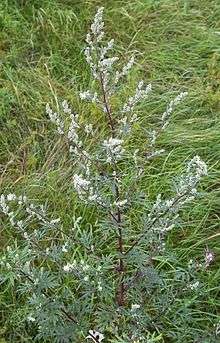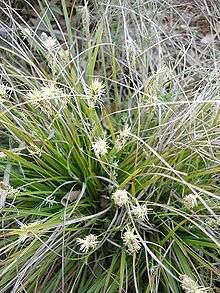Beringia


Beringia is defined today as the land and maritime area bounded on the west by the Lena River in Russia; on the east by the Mackenzie River in Canada; on the north by 72 degrees north latitude in the Chukchi Sea; and on the south by the tip of the Kamchatka Peninsula.[1] It includes the Chukchi Sea, the Bering Sea, the Bering Strait, the Chukchi and Kamchatka Peninsulas in Russia as well as Alaska in the United States.
The area includes land lying on the North American Plate and Siberian land east of the Chersky Range. Historically, it formed a land bridge that was up to 1,000 kilometres (620 mi) wide at its greatest extent and which covered an area as large as British Columbia and Alberta together[2] (1,600,000 square kilometres (620,000 sq mi)). Today, the only land that is visible from the central part of the Bering land bridge are the Diomede Islands, the Pribilof Islands of St. Paul and St. George, St. Lawrence Island, and King Island.[1]
The term Beringia was coined by the Swedish botanist Eric Hultén in 1937.[3] During the ice ages, Beringia, like most of Siberia and all of North and Northeast China, was not glaciated because snowfall was very light.[4] It was a grassland steppe, including the land bridge, that stretched for hundreds of kilometres into the continents on either side.
It is believed that a small human population of at most a few thousand arrived in Beringia from eastern Siberia during the Last Glacial Maximum before expanding into the settlement of the Americas sometime after 16,500 years ago during the Late Glacial Maximum as the American glaciers blocking the way southward melted,[5][6][7][8][9] but before the bridge was covered by the sea about 11,000 years Before Present.[10]
Before European colonization, Beringia was inhabited by the Yupik peoples on both sides of the straits. This culture remains in the region today along with others. In 2012, the governments of Russia and the United States announced a plan to formally establish "a transboundary area of shared Beringian heritage". Among other things this agreement would establish close ties between the Bering Land Bridge National Preserve and the Cape Krusenstern National Monument in the United States and the planned Beringia National Park in Russia.[11]
Geography
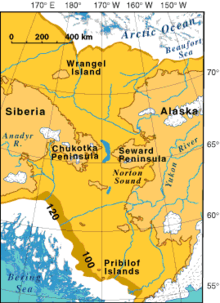

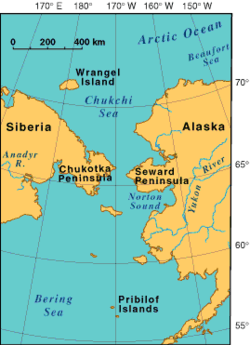
The remains of Late Pleistocene mammals that had been discovered on the Aleutians and islands in the Bering Sea at the close of the nineteenth century indicated that a past land connection might lay beneath the shallow waters between Alaska and Chukotka. The underlying mechanism was first thought to be tectonics, but by 1930 changes in the icemass balance, leading to global sea-level fluctuations, was viewed as the cause of the Bering Land Bridge.[12][13]
In 1937, Eric Hultén proposed that around the Aleutians and the Bering Strait region were tundra plants that had originally dispersed from a now-submerged plain between Alaska and Chukotka, which he named Beringia after Vitus Bering who had sailed into the strait in 1728.[14][13] The American arctic geologist David Hopkins redefined Beringia to include portions of Alaska and Northeast Asia. Beringia was later regarded as extending from the Verkhoyansk Mountains in the west to the Mackenzie River in the east.[13]
During the Pleistocene epoch, global cooling led periodically to the expansion of glaciers and lowering of sea levels. This created land connections in various regions around the globe.[15] Today, the average water depth of the Bering Strait is 40–50 meters, therefore the land bridge opened when the sea level dropped more than 50 meters below the current level.[16][17] A reconstruction of the sea-level history of the region indicated that a seaway existed from 135,000-70,000 YBP, a land bridge from 70,000-60,000 YBP, intermittent connection from 60,000-30,000 YBP, a land bridge from 30,000-11,000 YBP, followed by a Holocene sea-level rise that reopened the strait.[18][19] Post-glacial rebound has continued to raise some sections of coast.
During the last glacial period, enough of the earth's water became frozen in the great ice sheets covering North America and Europe to cause a drop in sea levels. For thousands of years the sea floors of many interglacial shallow seas were exposed, including those of the Bering Strait, the Chukchi Sea to the north, and the Bering Sea to the south. Other land bridges around the world have emerged and disappeared in the same way. Around 14,000 years ago, mainland Australia was linked to both New Guinea and Tasmania, the British Isles became an extension of continental Europe via the dry beds of the English Channel and North Sea, and the dry basin of the South China Sea linked Sumatra, Java and Borneo to Indochina.
Beringian refugium
Reconstructions of the Late Pleistocene palaeoenvironment of Beringia indicate that it had a relatively moist climate dominated by a shrub–tundra habitat that was very different from the dry environments on either side of it,[20][21][22] forming an ecological refugium. Beringia's closeness to the sea created intermittent maritime cloud cover, which caused an interruption to the dry and cold Mammoth steppe. Even in the driest and coldest periods of the Late Pleistocene, and possibly during the entire Pleistocene, moisture occurred along a north-south gradient with the south receiving the most cloud cover and moisture due to the air-flow from the North Pacific.[22]
In the Late Pleistocene, Beringia was a mosaic of biological communities.[23][20][24] Commencing from 57,000 YBP (MIS 3), steppe–tundra vegetation dominated large parts of Beringia with a rich diversity of grasses and herbs.[23][20][25] There were patches of shrub tundra with isolated refugia of larch (Larix) and spruce (Picea) forests with birch (Betula) and alder (Alnus) trees.[23][24][25][26] It has been proposed that the largest and most diverse megafaunal community residing in Beringia at this time could only have been sustained in a highly diverse and productive environment.[27] Analysis at Chukotka on the Siberian edge of the land bridge indicated that from 57,000-15,000 YBP (MIS 3 to MIS 2) the environment was wetter and colder than the steppe–tundra to the east and west, with warming in parts of Beringia from 15,000 YBP.[28] These changes provided the most likely explanation for mammal migrations after 15,000 YBP, as the warming provided increased forage for browsers and mixed feeders.[29] Beringia did not block the movement of most dry steppe-adapted large species such as saiga antelope, woolly mammoth, and caballid horses. However, from the west the woolly rhino went no further east than the Anadyr River, and from the east North American camels, the American kiang-like equids, the short-faced bear, bonnet-horned muskoxen, and badger did not travel west. At the beginning of the Holocene, some mesic habitat-adapted species left the refugium and spread westward into what had become tundra-vegetated northern Asia and eastward into northern North America.[22]
The latest emergence of the land bridge was 70,000 years ago. However, from 24,000–13,000 years ago the Laurentide ice sheet fused with the Cordilleran ice sheet, which blocked gene flow between Beringia (and Eurasia) and continental North America.[30][31][32] The Yukon corridor opened between the receding ice sheets 13,000 years ago, and this once again allowed gene flow between Eurasia and continental North America until the land bridge was finally closed by rising sea levels 10,000 years ago.[33] During the Holocene, many mesic-adapted species left the refugium and spread eastward and westward, while at the same time the forest-adapted species spread with the forests up from the south. The arid adapted species were reduced to minor habitats or became extinct.[22]
Beringia constantly transformed its ecosystem as the changing climate affected the environment, determining which plants and animals were able to survive. The land mass could be a barrier as well as a bridge: during colder periods, glaciers advanced and precipitation levels dropped. During warmer intervals, clouds, rain and snow altered soils and drainage patterns. Fossil remains show that spruce, birch and poplar once grew beyond their northernmost range today, indicating that there were periods when the climate was warmer and wetter. The environmental conditions were not homogenous in Beringia. Recent stable isotope studies of woolly mammoth bone collagen demonstrate that western Beringia (Siberia) was colder and drier than eastern Beringia (Alaska and Yukon), which was more ecologically diverse.[34] Mastodons, which depended on shrubs for food, were uncommon in the open dry tundra landscape characteristic of Beringia during the colder periods. In this tundra, mammoths flourished instead.
The extinct pine species Pinus matthewsii has been described from Pliocene sediments in the Yukon areas of the refugium.[35]
The paleo-environment changed across time.[36] Below is a gallery of some of the plants that inhabited eastern Beringia plants prior to the beginning of the Holocene.
- Gallery - plants of eastern Beringia (Alaska and the Yukon) 15,000-11,500 YBP
- ^ a b c d Dale Guthrie, R. (2006). "New carbon dates link climatic change with human colonization and Pleistocene extinctions". Nature. 441 (7090): 207–9. doi:10.1038/nature04604. PMID 16688174.
- ^ a b c d Zimov, S.A.; Zimov, N.S.; Tikhonov, A.N.; Chapin, F.S. (2012). "Mammoth steppe: A high-productivity phenomenon". Quaternary Science Reviews. 57: 26–45. doi:10.1016/j.quascirev.2012.10.005.
Human habitation
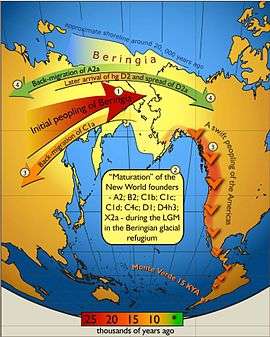
The Bering land bridge is a postulated route of human migration to the Americas from Asia about 20,000 years ago.[37] An open corridor through the ice-covered North American Arctic was too barren to support human migrations before around 12,600 years ago.[38][39] A study has indicated that of the people who migrated across this land bridge at that time, only 70 left their genetic imprint on modern descendants, which is known as a founder effect (this is easily misread as implying that only 70 people crossed to North America).[40]
Seagoing coastal settlers may also have crossed much earlier, but there is no scientific consensus on this point, and the coastal sites that would offer further information now lie submerged in up to a hundred metres of water offshore. Land animals migrated through Beringia as well, introducing to North America species that had evolved in Asia: mammals such as proboscideans and American lions, which evolved into now-extinct endemic North American species; and allowing equids and camelids that had evolved in North America (and later became extinct there) to migrate to Asia.
A study published in 2007 suggests that the Bering land bridge migration occurred 12,000 years ago, that every human who migrated across the land bridge came from Eastern Siberia, and that every indigenous person directly descends from that same group of Eastern Siberian migrants. The authors note that a "[u]nique genetic variant widespread in natives across both continents suggests that the first humans in the Americas came in a single migration or multiple waves from a single source, not in waves of migrations from different sources".[5]
Previous connections
Biogeographical evidence demonstrates previous connections between North America and Asia. Similar dinosaur fossils occur both in Asia and in North America. For instance the dinosaur Saurolophus was found in both Mongolia and western North America. Relatives of Troodon, Triceratops, and even Tyrannosaurus rex all came from Asia.
Fossils in China demonstrate a migration of Asian mammals into North America around 55 million years ago. By 20 million years ago, evidence in North America shows a further interchange of mammalian species. Some, like the ancient saber-toothed cats, have a recurring geographical range: Europe, Africa, Asia, and North America. The only way they could reach the New World was by the Bering land bridge. Had this bridge not existed at that time, the fauna of the world would be very different.
Researchers have started to use molecular phylogenetics to trace the history of faunal exchange and diversification, through the genetic history of parasites and pathogens of North American ungulates. An international Beringian Coevolution Project is collaborating to provide material to assess the pattern and timing of faunal exchange and the potential impact of past climatic events on differentiation.
See also
- Bering Strait crossing
- Bluefish Caves
- Geologic time scale
- Last glacial period
- Pleistocene
- Yukon Beringia Interpretive Centre
References
- ↑ Dr Barbara Winter (2005). "A Journey to a New Land". www.sfu.museum. virtualmuseum.ca. Retrieved 19 May 2015.
- ↑ John F. Hoffecker; Scott A. Elias (15 June 2007). Human Ecology of Beringia. Columbia University Press. p. 3. ISBN 978-0-231-13060-8. Retrieved 2016-04-10.
- ↑ Karel Hendrik Voous (1973). Proceedings of the 15th International Ornithological Congress, The Hague, The Netherlands 30 August-5 September 1970. Brill Archive. p. 33. ISBN 978-90-04-03551-5. Retrieved 2016-04-10.
- 1 2 Wang, Sijia; Lewis, C. M. Jr.; Jakobsson, M.; Ramachandran, S.; Ray, N.; et al. (2007). "Genetic Variation and Population Structure in Native Americans". PLoS Genetics. 3 (11): e185. doi:10.1371/journal.pgen.0030185. PMC 2082466
 . PMID 18039031.
. PMID 18039031. - ↑ Goebel, Ted; Waters, Michael R.; O'Rourke, Dennis H. (2008). "The Late Pleistocene Dispersal of Modern Humans in the Americas". Science. 319 (5869): 1497–1502. Bibcode:2008Sci...319.1497G. doi:10.1126/science.1153569. PMID 18339930.
- ↑ Fagundes, Nelson J. R.; et al. (2008). "Mitochondrial Population Genomics Supports a Single Pre-Clovis Origin with a Coastal Route for the Peopling of the Americas". American Journal of Human Genetics. 82 (3): 583–592. doi:10.1016/j.ajhg.2007.11.013. PMC 2427228
 . PMID 18313026.
. PMID 18313026. - ↑ Tamm, Erika; et al. (2007). Carter, Dee, ed. "Beringian Standstill and Spread of Native American Founders". PLoS ONE. 2 (9): e829. Bibcode:2007PLoSO...2..829T. doi:10.1371/journal.pone.0000829. PMC 1952074
 . PMID 17786201.
. PMID 17786201. - ↑ Achilli, A.; et al. (2008). MacAulay, Vincent, ed. "The Phylogeny of the Four Pan-American MtDNA Haplogroups: Implications for Evolutionary and Disease Studies". PLoS ONE. 3 (3): e1764. Bibcode:2008PLoSO...3.1764A. doi:10.1371/journal.pone.0001764. PMC 2258150
 . PMID 18335039.
. PMID 18335039. - ↑ Elias, Scott A.; Short, Susan K.; Nelson, C. Hans; Birks, Hilary H. (1996). "Life and times of the Bering land bridge". Nature. 382 (6586): 60. doi:10.1038/382060a0.
- ↑ Llanos, Miguel (21 September 2012). "Ancient land of 'Beringia' gets protection from US, Russia". NBC News.
- ↑ Hopkins DM. 1967. Introduction. In: Hopkins DM, editor. The Bering land bridge. Stanford: Stanford University Press. p 1–6.
- 1 2 3 Hoffecker, John F.; Elias, Scott A.; O'Rourke, Dennis H.; Scott, G. Richard; Bigelow, Nancy H. (2016). "Beringia and the global dispersal of modern humans". Evolutionary Anthropology: Issues, News, and Reviews. 25 (2): 64. doi:10.1002/evan.21478.
- ↑ Hultén E. 1937. Outline of the history of arctic and boreal biota during the Quaternary Period. New York: Lehre J. Cramer.
- ↑ [Lowe JJ, Walker M. 1997 Reconstructing quaternary environments, 2nd edn. Harlow, UK: Prentice Hall.
- ↑ .Miller, K.G., Kominz, M.A., Browning, J.V., Wright, J.D., Mountain, G.S., Katz, M.E., Sugarman, P.J., Cramer, B.S., Christie-Blick, N. & Pekar, S.F. (2005) The Phanerozoic record of global sea-level change. Science, 310, 1293–1298.
- ↑ Siddall, M., Rohling, E.J., Almogi-Labin, A., Hemleben, C., Eischner, D., Schmelzer, I & Smeed, D.A. (2003) Sealevel fluctuations during the last glacial cycle. Nature, 423, 853–858.
- ↑ Hu, Aixue; Meehl, Gerald A.; Otto-Bliesner, Bette L.; Waelbroeck, Claire; Han, Weiqing; Loutre, Marie-France; Lambeck, Kurt; Mitrovica, Jerry X.; Rosenbloom, Nan (2010). "Influence of Bering Strait flow and North Atlantic circulation on glacial sea-level changes". Nature Geoscience. 3 (2): 118. doi:10.1038/ngeo729.
- ↑ Meiri, M.; Lister, A. M.; Collins, M. J.; Tuross, N.; Goebel, T.; Blockley, S.; Zazula, G. D.; Van Doorn, N.; Dale Guthrie, R.; Boeskorov, G. G.; Baryshnikov, G. F.; Sher, A.; Barnes, I. (2013). "Faunal record identifies Bering isthmus conditions as constraint to end-Pleistocene migration to the New World". Proceedings of the Royal Society B: Biological Sciences. 281 (1776): 20132167. doi:10.1098/rspb.2013.2167.
- 1 2 3 Elias SA, Crocker B. 2008 The Bering land bridge: a moisture barrier to the dispersal of steppe-tundra biota? Q. Sci. Rev. 27, 2473–2483
- ↑ Elias SA, Short SK, Birks HH. 1997 Late Wisconsin environments of the Bering land bridge. Palaeogeogr. Palaeoecol. 136, 293–308
- 1 2 3 4 Guthrie RD. 2001 Origin and causes of the mammoth steppe: a story of cloud cover, woolly mammal tooth pits, buckles, and inside-out Beringia. Q. Sci. Rev. 20, 549–574.
- 1 2 3 Hoffecker JF, Elias SA. 2007 Human ecology of Beringia. New York, NY: Columbia University Press.
- 1 2 Brigham-Grette J, Lozhkin AV, Anderson PM, Glushkova OY. 2004 Paleoenvironmental conditions in Western Beringia before and during the Last Glacial Maximim. In Entering America, northeast Asia and Beringia before the last glacial maximum (ed. Madsen DB), pp. 29–61. Salt Lake City, UT: University of Utah Press
- 1 2 Sher AV, Kuzmina SA, Kuznetsova TV, Sulerzhitsky LD . 2005 New insights into the Weichselian environment and climate of the East Siberian Arctic, derived from fossil insects, plants, and mammals. Q. Sci. Rev. 24, 533–569.
- ↑ Anderson PH, Lozhkin AV. 2001 The Stage 3 interstadial complex (Karginskii/middle Wisconsinan interval) of Beringia: variations in paleoenvironments and implications for paleoclimatic interpretations. Q. Sci. Rev. 20, 93–125
- ↑ Guthrie RD. 1982 Mammals of the mammoth steppe as paleoenvironmental indicators. In Paleoecology of Beringia (eds Hopkins DM, Matthews JV, Schweger CE, Young SB), pp. 307–324. New York, NY: Academic Press
- ↑ Kuzmina SA, Sher AV, Edwards ME, Haile J, Yan EV, Kotov AV, Willerslev E. 2011 The late Pleistocene environment of the Eastern West Beringia based on the principal section at the Main River, Chukotka. Q. Sci. Rev. 30, 2091–2106
- ↑ Meiri, M.; Lister, A. M.; Collins, M. J.; Tuross, N.; Goebel, T.; Blockley, S.; Zazula, G. D.; Van Doorn, N.; Dale Guthrie, R.; Boeskorov, G. G.; Baryshnikov, G. F.; Sher, A.; Barnes, I. (2013). "Faunal record identifies Bering isthmus conditions as constraint to end-Pleistocene migration to the New World". Proceedings of the Royal Society B: Biological Sciences. 281 (1776): 20132167. doi:10.1098/rspb.2013.2167.
- ↑ Burns, J.A. (2010) Mammalian faunal dynamics in Late Pleistocene, Alberta, Canda. Quaternary International, 217, 37–42.
- ↑ Gowan, E.J. (2013) An assessment of the minimum timing of ice free conditions of the western Laurentide ice sheet. Quaternary Science Review, 75, 100–113.
- ↑ Rabassa, J. & Ponce, J.F. (2013) The Heinrich and Dansgaard-Oeschger climatic events during Marine Isotopic Stage 3:searching for appropriate times for human colonization of the America. Quaternary International, 299, 94–105.
- ↑ Koblmüller, Stephan; Vilà, Carles; Lorente-Galdos, Belen; Dabad, Marc; Ramirez, Oscar; Marques-Bonet, Tomas; Wayne, Robert K.; Leonard, Jennifer A. (2016). "Whole mitochondrial genomes illuminate ancient intercontinental dispersals of grey wolves (Canis lupus)". Journal of Biogeography. 43 (9): 1728. doi:10.1111/jbi.12765.
- ↑ Szpak, Paul; et al. (2010). "Regional differences in bone collagen δ13C and δ15N of Pleistocene mammoths: Implications for paleoecology of the mammoth steppe". Palaeogeography, Palaeoclimatology, Palaeoecology. 286 (1–2): 88–96. doi:10.1016/j.palaeo.2009.12.009.
- ↑ McKown, A.D.; Stockey, R.A.; Schweger, C.E. (2002). "A New Species of Pinus Subgenus Pinus Subsection Contortae From Pliocene Sediments of Ch'Ijee's Bluff, Yukon Territory, Canada". International Journal of Plant Sciences. 163 (4): 687–697. doi:10.1086/340425.
- ↑
- ↑ National Geographic. "Atlas of the Human Journey." 2005. May 2, 2007
- ↑ Humans may have taken different path into Americas than thought Arctic passage wouldn’t have provided enough food for the earliest Americans’ journey by Thomas Summer, published in "Science News" on August 10, 2016
- ↑ "Plant and animal DNA suggests first Americans took the coastal route". Nature. doi:10.1038/536138a. Retrieved 11 August 2016.
- ↑ Hey, Jody (2005). "On the Number of New World Founders: A Population Genetic Portrait of the Peopling of the Americas". PLoS Biology. 3 (6): e193. doi:10.1371/journal.pbio.0030193. PMC 1131883
 . PMID 15898833.
. PMID 15898833.
Further reading
- Pringle, Heather (2014). "Welcome to Beringia". Science. 343 (6174): 961–3. doi:10.1126/science.343.6174.961. PMID 24578560.
- Hoffecker, JF; Elias, SA; O'Rourke, DH (2014). "Anthropology. Out of Beringia?". Science. 343 (6174): 979–80. Bibcode:2014Sci...343..979H. doi:10.1126/science.1250768. PMID 24578571.
- Pielou, E. C., After the Ice Age : The Return of Life to Glaciated North America (Chicago: University of Chicago Press) 1992 ISBN 978-0-226-66812-3
- Hey, Jody (2005). "On the Number of New World Founders: A Population Genetic Portrait of the Peopling of the Americas". PLoS Biology. 3 (6): e193. doi:10.1371/journal.pbio.0030193. PMC 1131883
 . PMID 15898833.
. PMID 15898833. - Hoffecker, John F.; Elias, Scott A. (2007). Human ecology of Beringia. Columbia University Press. ISBN 978-0-231-13060-8. Retrieved 2016-04-10.
External links
| Wikimedia Commons has media related to Bering Land Bridge. |
- Shared Beringian Heritage Program
- International National Park in the Bering Strait
- Bering Land Bridge National Preserve
- D.K. Jordan, "Prehistoric Beringia"
- Paleoenvironmental atlas of Beringia: includes animation showing the gradual disappearance of the Bering land bridge
- Yukon Beringia Interpretive Centre
- Paleoenvironments and Glaciation in Beringia
- Study suggests 20000 year hiatus in Beringia
- Fagundes, Nelson J.R.; Kanitz, Ricardo; Eckert, Roberta; Valls, Ana C.S.; Bogo, Mauricio R.; Salzano, Francisco M.; Smith, David Glenn; Silva Jr., Wilson A.; et al. (3 March 2008). "Mitochondrial Population Genomics Supports a Single Pre-Clovis Origin with a Coastal Route for the Peopling of the Americas" (PDF). American Journal of Human Genetics. 82 (3): 583–592. doi:10.1016/j.ajhg.2007.11.013. PMC 2427228
 . PMID 18313026.
. PMID 18313026.
